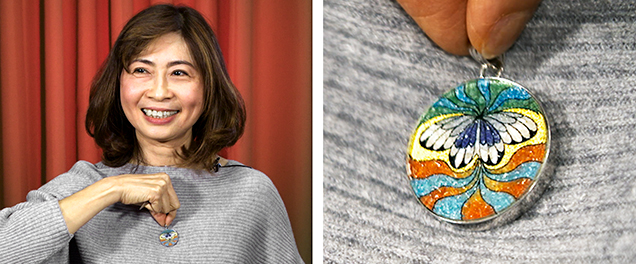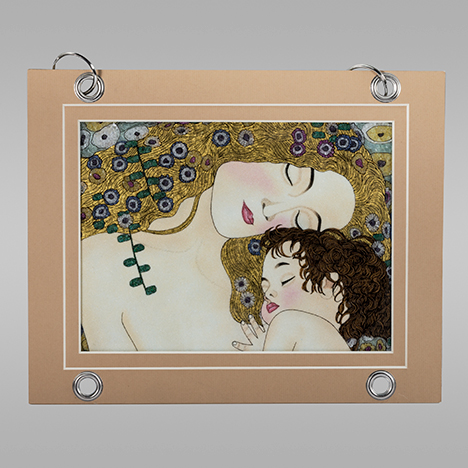Gem Paintings from Thailand

The 2017 GJX show hosted a new vendor that manufactures and sells gem paintings, merchandise not typically seen in international gem and jewelry shows. Only a handful of companies around the globe are active in this market segment. Than Thong Arts operates its own factory in northern Thailand. Owner Wanlaya Suwannapirom is from a family that has been in the jewelry industry for over 70 years. She started her gem painting business more than a decade ago and gradually became the industry leader, with both international and domestic clientele (figure 1).
These paintings are handmade by highly skilled artisans in Thailand, using natural uncut gem fragments sourced from all over the world. The fragments come from either mining operations or cutting factories. The paintings’ bright colors are generated by colored gem fragments, while the background and skin tones are created by dyed quartz or calcite powder. Artists also use extremely thin 24K gold leaf to color human hair and other details (figure 2). Unlike many other gem paintings, the gemstones are not glued to paper or canvas but attached to the glass and then framed.

The process includes several steps: sketching the painting on paper, a reverse transfer to glass, gluing the gem fragments and the dyed quartz or calcite powder, drying the glue, and framing the artwork. The middle steps are the most critical for the quality of the final product. The fragments are sorted into different sizes. Painters need to follow the order to apply the coarser grains first and then gradually go down to smaller sizes to fill the holes in between the fragments. This step continues until no space left between any fragments and the motif is completely colored by gems. Another challenge is to accurately and naturally reflect the human skin tone (again, see figure 2). To achieve this, painters grind quartz or calcite into very fine powder and dye them to slightly different tones for a very gradational transition of skin tone.
To cater to a wide range of customers, paintings are produced in many sizes and framed in various ways (figure 3). Besides wall and desk decor, the paintings are framed in jewelry boxes and wearable jewelry. According to Suwannapirom, smaller paintings require more attention to detail. In addition, crystal glass that contains a higher concentration of lead is used on the wearables to give them a glossier look than the pyrolytic glass used for decor. Therefore, the price range of the jewelry is similar to some of the larger desk decor pieces.

Customized gem paintings based on photos can also be specially created. At the booth, we saw some photo-based portraits made by Suwannapirom and her team. Some prominent figures have hired her to produce their portrait in gems, including the kings of Saudi Arabia and Thailand. The finished products look very accurate and natural. The gems in the paintings offered at the show came with a certificate of authenticity issued by a Thai gemological lab.



